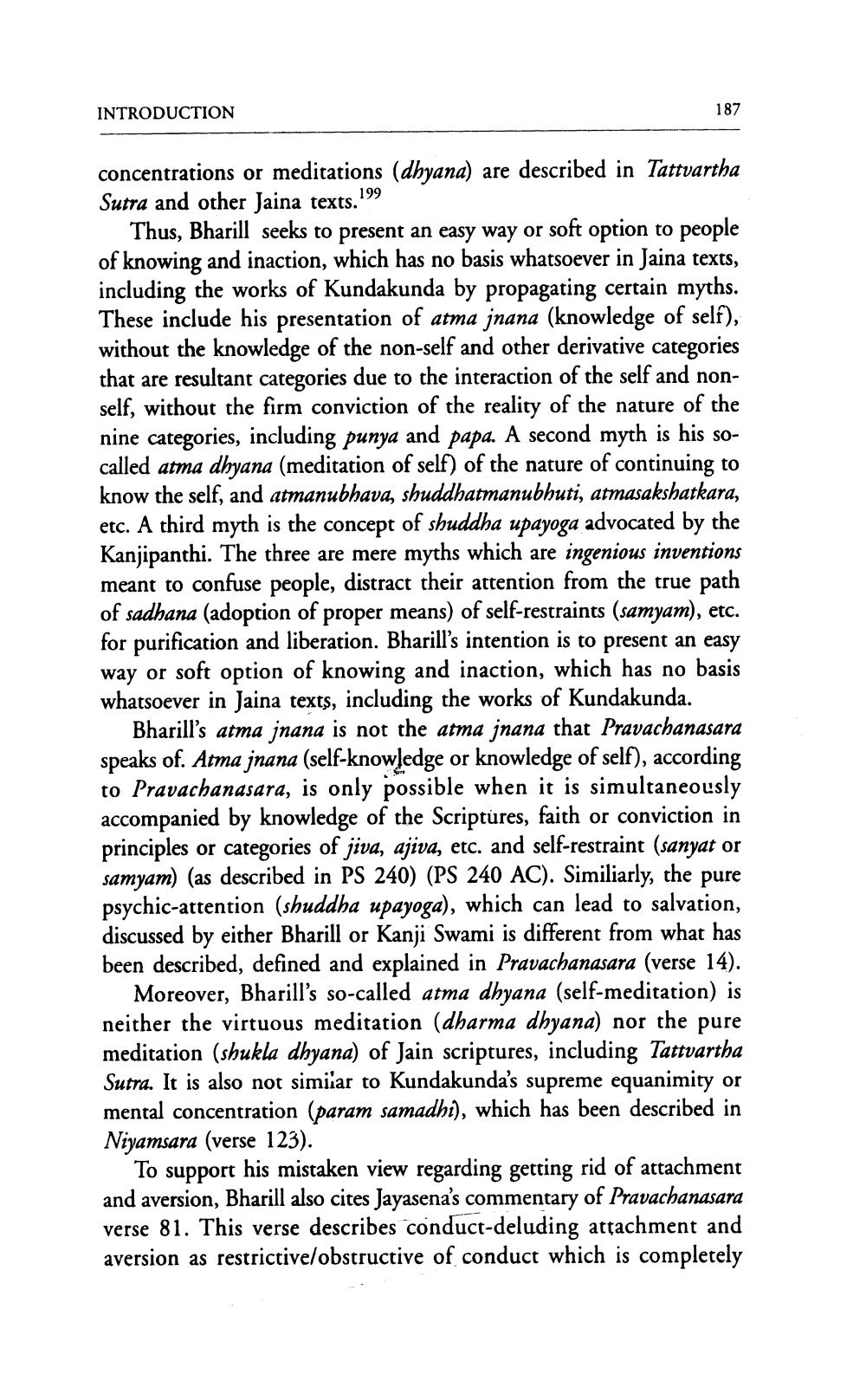________________
INTRODUCTION
187
concentrations or meditations (dhyana) are described in Tattvartha Sutra and other Jaina texts."99
Thus, Bharill seeks to present an easy way or soft option to people of knowing and inaction, which has no basis whatsoever in Jaina texts, including the works of Kundakunda by propagating certain myths. These include his presentation of atma jnana (knowledge of self), without the knowledge of the non-self and other derivative categories that are resultant categories due to the interaction of the self and nonself, without the firm conviction of the reality of the nature of the nine categories, including punya and papa. A second myth is his socalled atma dhyana (meditation of self) of the nature of continuing to know the self, and atmanubhava, shuddhatmanubhuti, atmasakshatkara, etc. A third myth is the concept of shuddha upayoga advocated by the Kanjipanthi. The three are mere myths which are ingenious inventions meant to confuse people, distract their attention from the true path of sadhana (adoption of proper means) of self-restraints (samyam), etc. for purification and liberation. Bharill's intention is to present an easy way or soft option of knowing and inaction, which has no basis whatsoever in Jaina texts, including the works of Kundakunda.
Bharill's atma jnana is not the atma jnana that Pravachanasara speaks of. Atma jnana (self-knowledge or knowledge of self), according to Pravachanasara, is only possible when it is simultaneously accompanied by knowledge of the Scriptures, faith or conviction in principles or categories of jiva, ajiva, etc. and self-restraint (sanyat or samyam) (as described in PS 240) (PS 240 AC). Similiarly, the pure psychic-attention (shuddha upayoga), which can lead to salvation, discussed by either Bharill or Kanji Swami is different from what has been described, defined and explained in Pravachanasara (verse 14).
Moreover, Bharill's so-called atma dhyana (self-meditation) is neither the virtuous meditation (dharma dhyana) nor the pure meditation (shukla dhyana) of Jain scriptures, including Tattvartha Sutra. It is also not simiiar to Kundakunda's supreme equanimity or mental concentration (param samadhi), which has been described in Niyamsara (verse 123).
To support his mistaken view regarding getting rid of attachment and aversion, Bharill also cites Jayasena's commentary of Pravachanasara verse 81. This verse describes conduct-deluding attachment and aversion as restrictivelobstructive of conduct which is completely




